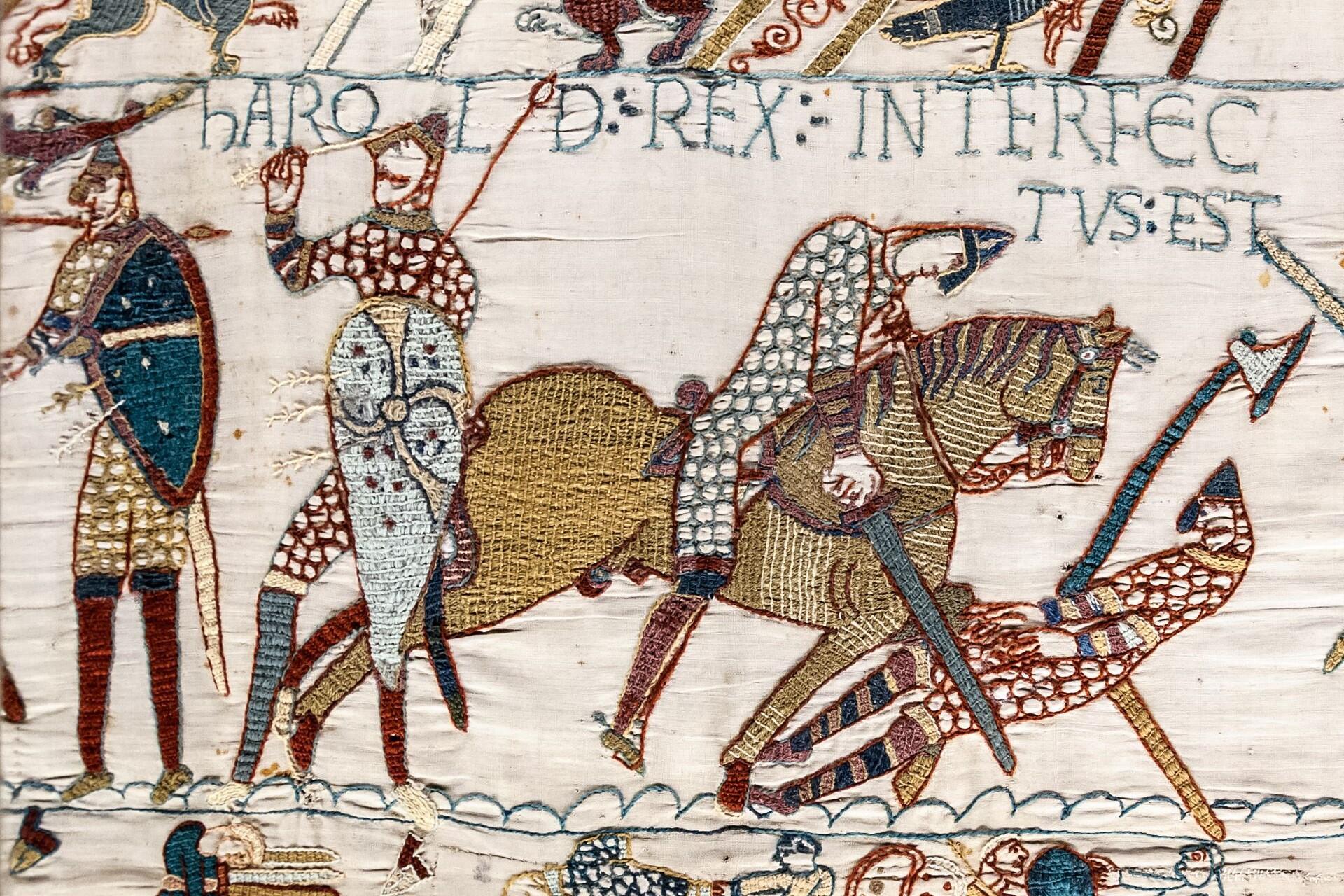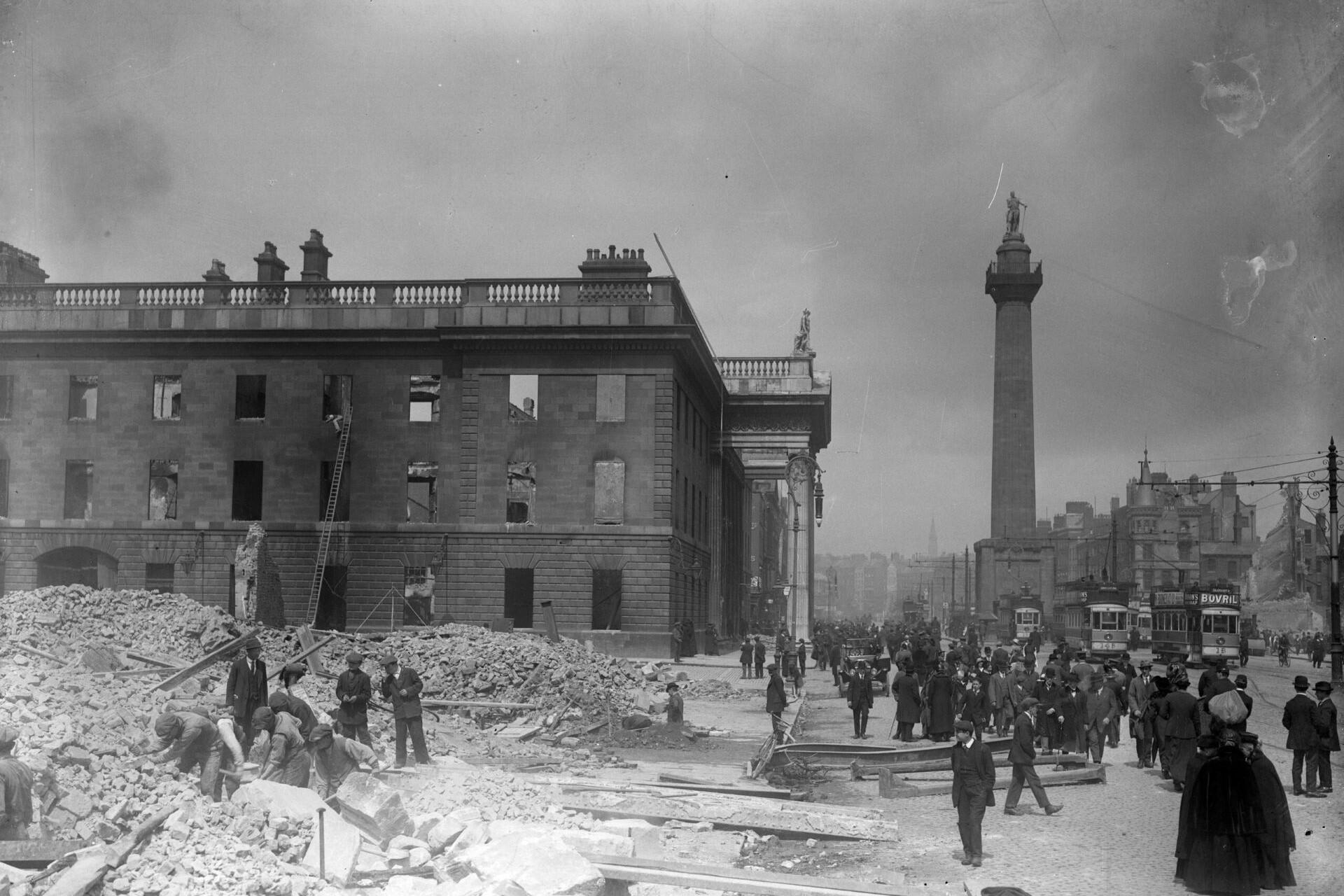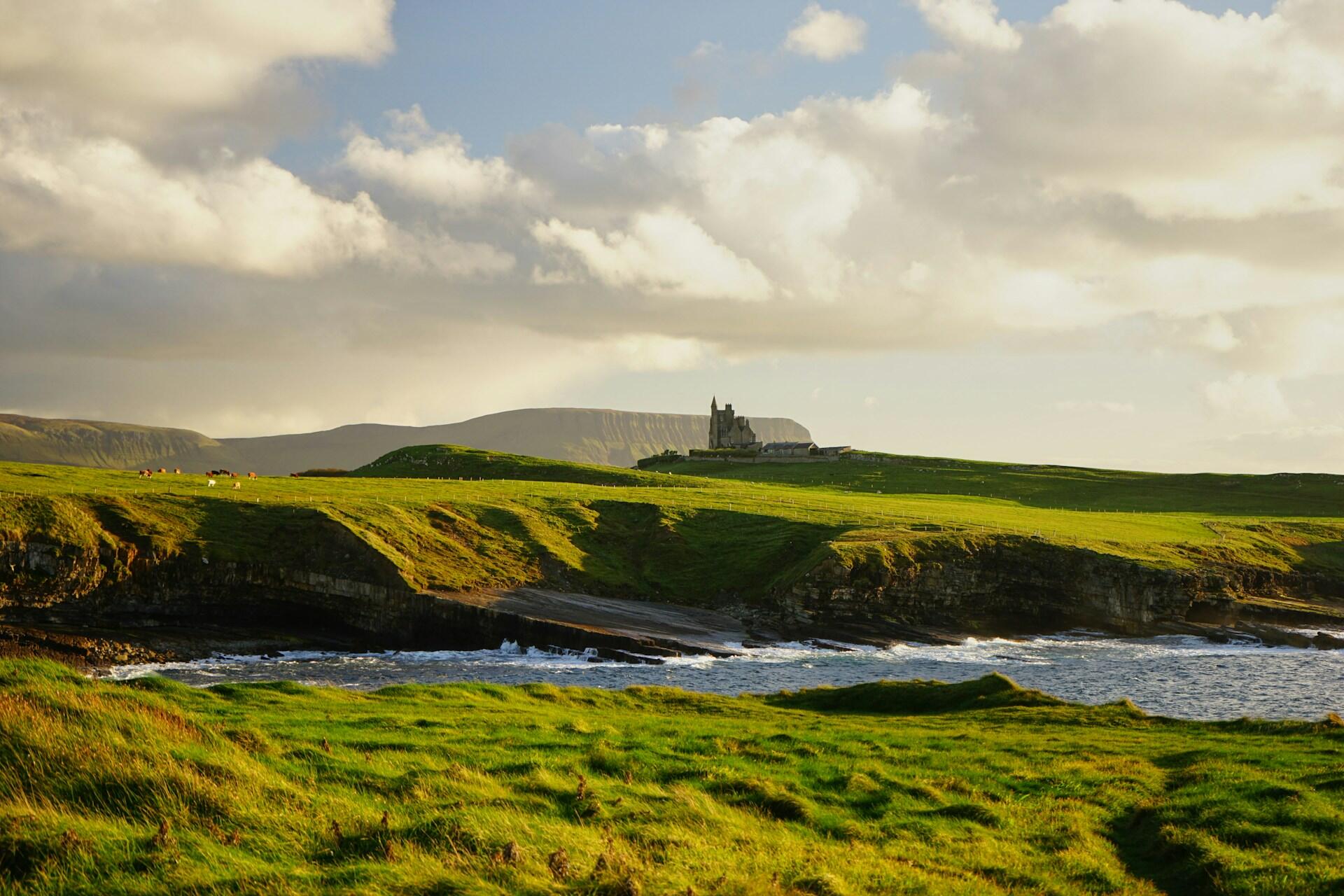There wasn't a single event in which Ireland gained independence. Instead, it's a much longer story, including rebellion, political upheaval, and armed struggle. From the Easter Rising of 1916 to the Irish War of Independence, the Anglo-Irish Treaty of 1921, and the Irish Free State in 1922, the key events, movements, and figures have left their mark on Ireland for decades.

Ireland Under British Rule: A Long History of Resistance
When we refer to Irish independence, we typically mean independence from British rule.
Earlier in Ireland's history, it had been settled by Mesolithic, Neolithic, Beaker, and Bronze Age cultures and then subjected to the migration of Celtic tribes that would eventually become the dominant culture in the area.
Norse Vikings raided and settled in coastal areas in the 8th and 9th centuries before eventually integrating into Irish society.
In the 12th century, Norman knights from Wales and England invaded after a deposed Irish king, Dermot MacMurrough, requested it. They built castles, introduced feudalism, and established the Pale. This marked the first real British invasion of Ireland.

Ireland was under British rule in some form until the 20th century, but the situation had never been very stable.
Tensions reached a boiling point in the 19th and early 20th centuries, particularly following the discrimination against the Catholic majority (which had famously been introduced to Ireland by St. Patrick), land dispossession, and economic hardship, which had been going on for centuries.
There was some support for the idea of Home Rule, whereby Ireland would have limited self-governance within the United Kingdom. Still, many demanded complete independence and the creation of a republic.
The British used military and police forces to maintain control, particularly in areas like Dublin and Ulster. However, Irish resistance was constant and constantly evolving. Though some uprisings ultimately failed during the 18th and 19th centuries, the 20th century marked a critical point.
The Rise of Irish Nationalism and Sinn Féin
In the early 20th century, Irish nationalism had gone beyond the cultural and political movement into a powerful demand for complete independence, with a strengthened national identity connected with the Celtic peoples that inhabited the island before the British Crown began exerting influence on the island.
The Home Rule movement sought limited self-governance within the United Kingdom. Many Irish people were frustrated with the delays and compromises this would entail.
In 1905, Sinn Féin was founded by Arthur Griffith and quickly gained traction. It actually sought a dual monarchy rather than outright separation at first. Still, after the Easter Rising of 1916, it became more radical after being blamed by the British for the rebellion.

Public sympathy for the Rising's leaders grew, as did support for more assertive nationalism within Ireland. By the 1918 general election, Sinn Féin was a republican party advocating for a fully independent Irish republic. In Ireland, it won a sweeping majority, refused to take seats at Westminster, and formed the First Dáil Éireann, the revolutionary Irish parliament in Dublin.
This was one of the first and most precise shifts towards direct action against British rule in Ireland.
The Easter Rising of 1916: A Rebellion That Changed Everything
So, what exactly was the Easter Rising of 1916?
Although a military failure, the Easter Rising of 1916 ignited public support for Irish independence. The British execution of rebel leaders turned them into martyrs and shifted public opinion toward revolution.
When people talk about Irish independence, this is often one of the most cited events and its effects on Ireland's path to independence cannot be understated.
On Easter Monday, 24th April, 1916, a group of Irish republicans launched an armed insurrection in Dublin to end British rule.
They had hoped to establish an independent Irish Republic but were poorly coordinated and lacked widespread support.
However, key leaders like Patrick Pearse, James Connolly, and Joseph Plunkett led around 1,200 rebels to seize key buildings within Dublin, such as the General Post Office (GPO).

They issued a proclamation declaring Ireland's independence, but the British response was swift and overwhelming, with the Rising being crushed and a lot of central Dublin lying in ruin. Nearly 500 people died, many of them civilians.
Public opinion was mixed in the immediate aftermath, but with the execution of 16 leaders by British forces, the rebellion quickly became the rallying point for nationalist sentiment.
The British reaction radicalised Irish politics, and the more moderate nationalist efforts were seen as not going far enough. This had happened before during the potato famine, where the British government's actions had drastically worsened a crop failure.
The Rising might have failed, but it set the stage for armed political struggles that would consume the following years.
From Rebellion to Revolution: The Road to War
Instead of quelling nationalist support, the British reaction had fueled it.
Sinn Féin shifted to full-on support for an Irish Republic, secured a sweeping victory across most of Ireland, and set up the First Dáil Éireann in Dublin in January 1919.
Ireland was declared an independent republic, and on the same day, two RIC officers were shot dead in Tipperary, which is widely seen as the first act of the Irish War of Independence.
The Irish Republican Army (IRA), which was formed from Irish Volunteers, started coordinating a guerrilla campaign against British rule. Its goal was to force Britain to recognize Ireland's independence through military and political pressure.
Local councils began pledging allegiance to the Dáil, and IRA units organized and carried out ambushes and raids on British barracks.
What had started as a political shift evolved into an outright revolution, and rather than a call for reform, Ireland was actively breaking away from British rule.
The Irish War of Independence: Guerrilla Warfare Across Ireland
The Irish War of Independence lasted from 1919 to 1921, covering Ireland in brutal and uneven conflict.
It was mainly fought between the IRA and British forces, including the Royal Irish Constabulary (RIC), the British Army, and the notorious Black and Tans.
The IRA relied on guerrilla tactics, using ambushes, raids, and targeted assassinations to disrupt the British administration and wear down its military presence.
Rural areas, particularly in Cork, Tipperary, and Mayo, were hotbeds of resistance, but the violence would strike urban centers like Dublin.
When the IRA attacked barracks or police patrols, the British response was often harsh, burning homes, arresting civilians, and conducting summary executions.
One of the most famous episodes was Bloody Sunday on 21st November, 1920, when the IRA assassinated 14 British intelligence officers in Dublin and the British responded by opening fire on a crowd at a football match in Croke Park, killing 14 civilians.
By 1921, the British government faced pressure at home and was forced to negotiate.

The Role of the IRA and Irish Volunteers
The IRA was at the heart of the fight for independence. It was formed from the earlier Irish Volunteers who'd participated in the Easter Rising.
While the Irish Volunteers were a loosely organized nationalist militia, the IRA was a far more coordinated revolutionary force.
The IRA operated in small, mobile units known as “flying columns”, carrying out ambushes, sabotage, and attacks on police barracks and British convoys.
Local populations provided safe houses, intelligence, and supplies. However, this also exposed these civilians to British reprisals.
The IRA's intelligence network, particularly in Dublin, was remarkably effective and infiltrated British security services.
It faced many challenges, but the decentralized tactics made it impossible for British forces to suppress it. Its strengths lay in the fact that it wasn't a conventional army. It was adaptable and deeply rooted in Irish communities, fighting a war of attrition that would ultimately force Britain to recognize Ireland's demand for self-rule.
British Forces in Ireland: RIC, Black and Tans, and the Auxiliaries
On the British side, several existing and newly formed forces were deployed. The established police force (the RIC) quickly became the IRA's primary target.
This was reinforced by two controversial units: the Black and Tans and the Auxiliaries. The Black and Tans were largely made up of hastily recruited World War I veterans who were poorly trained.
The Black and Tans were notorious for their indiscipline, brutality, and reprisals against civilians. They often burned villages, raided homes, and retaliated violently to IRA attacks.
The Auxiliaries were a more elite paramilitary group of former British officers, but they were also very heavy-handed in their response.
Politically, these groups only fueled public outrage in Ireland and Britain, shifting domestic and international opinion towards the Irish cause.
Guerrilla warfare
Flying columns
Local support
Ambushes & raids
RIC (Royal Irish Constabulary)
Black and Tans
Auxiliaries
Harsh reprisals
The Government of Ireland Act and Partition
The Government of Ireland Act was passed in 1920 as the British attempted to manage the crisis.
This proposed partitioning the state into two separate entities: Northern Ireland and Southern Ireland, each with its own parliament within the United Kingdom.
This was rejected in the South, but the Protestant majority in the North, fearing a Catholic-led Irish republic, established Northern Ireland officially in May 1921, with Belfast as the capital.
This would entrench division on the island and sow the seeds of long-term political and sectarian conflict.
The Anglo-Irish Treaty: Compromise and Controversy
In July 1921, a truce was declared between the British government and the IRA. The Anglo-Irish Treaty was signed on 6th December 1921, establishing the Irish Free State.

The Irish Free State was a self-governing dominion within the British Commonwealth. While it granted significant autonomy, members of the new Free State parliament had to swear an oath of allegiance to the British Crown, which was far from acceptable for Irish republicans.
Some saw the treaty as a step towards full independence, while others felt it betrayed the Irish Republic, which had been declared in 1916.
The Birth of the Irish Free State and the Civil War
After the ratification of the Anglo-Irish Treaty, the country and the Irish republican movement were split. Just months later, the Irish Civil War broke out.
The war, which started in June 1922, left around 2,000 people dead, with the Free State army eventually overpowering the anti-Treaty IRA through better organization and British-supplied arms.
This wasn't the end of Ireland's path to independence, though. Complete separation from Britain would actually take decades.
1905
Sinn Féin founded
1916
Easter Rising
1919–1921
War of Independence
1921
Anglo-Irish Treaty signed
1922–1923
Civil War
1949
Republic of Ireland declared
Legacy of the Struggle: How Independence Shaped Modern Ireland
The Irish Free State was a new political era for the country, but it came with increasing divisions.
Ireland was fractured, with Northern Ireland remaining part of the United Kingdom and the newer Irish Free State divided between supporters of the new status quo and the ongoing fight for a fully-fledged Irish Republic.
Over time, the Free State evolved into the Republic of Ireland, leaving the British Commonwealth in 1949, decades later.















